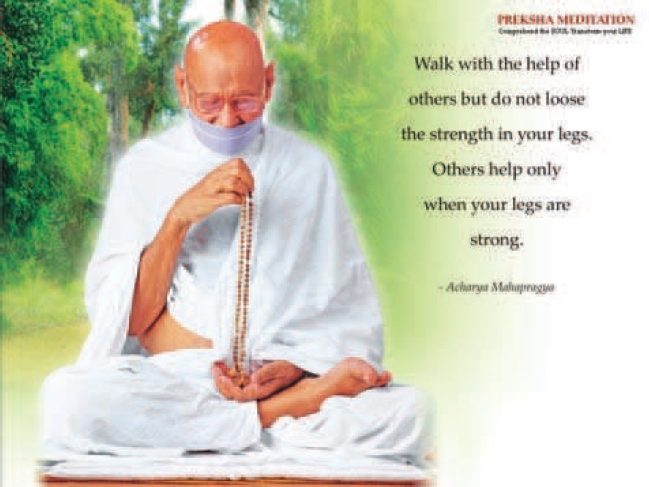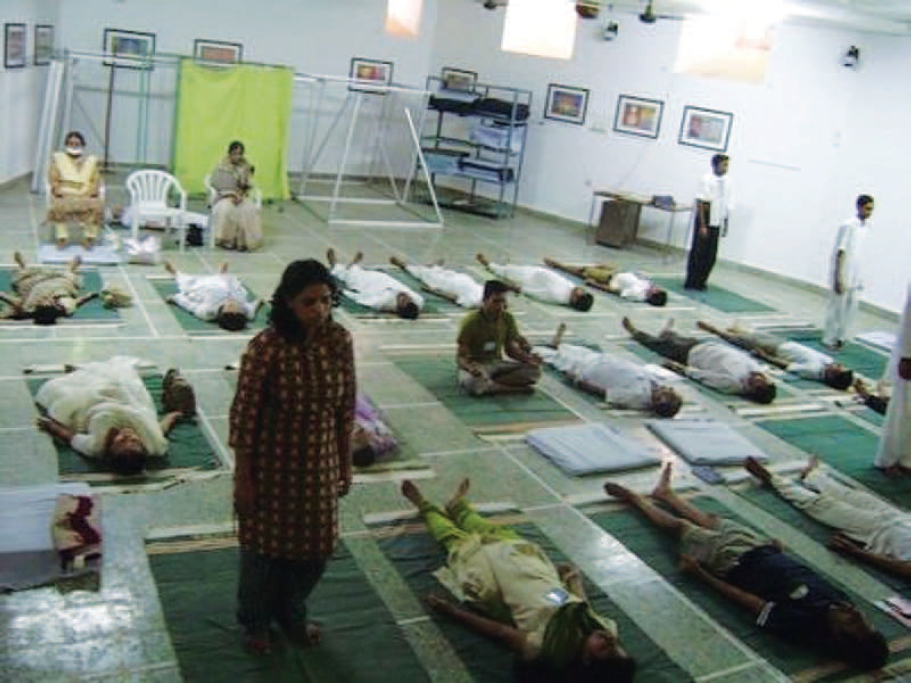
Business Economics
The modern age has given men many conveniences and comforts. Also, it has given a fast life. Almost everything is constantly changing. It has brought peer pressure, traffic jams, riots, violence, gangs, competition, and pressure from society, fear, anger, manipulative nature, greediness and many similar things. These have all created problems of stress, insomnia, high blood pressure, heart disease and restlessness.
The Effects of Stress on Innate Mechanisms
Stress activates the innate mechanisms of our bodies, putting into action disorderly responses. The hypothalamus is a prominent part of the brain which incorporates all the functions of the body. The pituitary is the master gland of the endocrine system which regulates other glands such as the pineal, thyroid etc. Due to stress, the pituitary gland goes out of order. Stress activates the brain's fight or flight mechanism which causes the release of hormones like adrenalin, and influences both the sympathetic and parasympathetic nervous systems, causing imbalance.
Stress: Root of many diseases
When stressful situations regularly occur, the stress mechanism is repeatedly activated; the heart begins to race and starts to pump more blood causing high blood pressure. Stress also accelerates breathing and tightens muscles. Muscle tension brings aches and pains in the head, back, neck, shoulders etc. Due to adrenaline secretions, saliva glands dry up which in turn slows digestion and reduces the supply of blood to the digestive system. Stress makes man vulnerable to anxiety. Besides these, chronic tension may also bring the feelings of irrational fear. Thus stress is the root of all the diseases. It makes the person sick physically, mentally and emotionally too.
To resolve stress, people depend on parties, alcohol, drugs, television, music, movies, entertainment, sleeping pills, etc. The idea that these items relieve stress is a great illusion. The permanent solution lies in the practice of Kayotsarga.
Relaxation - A best way to remove Stress
To gain relief from all kinds of stress, Preksha Meditation has one scientific technique called Kayotsarga. Human beings have four dynamic faculties - body, breathing, speech and mind, which remain always active. They activate each other too. If Kayotsarga is practiced with complete belief and willpower, it slows down the movements of these four elements. While practicing Kayotsarga, through the technique of auto-suggestion, gross body becomes motionless, breathing slows down, and silence is observed. Relaxation creates a situation of deep mental concentration, feeling of equanimity.
Rigidity of muscles is the main cause of bodily pain but when one relaxes his body, each part of body gets balanced vital flow of energy which removes stiffness, rigidity and pain from the body. Relaxation makes a person calm and pacifies all his passions. The main purpose of Kayotsarga is to gain self-awareness. The regular practice of Kayotsarga brings self-awareness in the practitioner. If once a person gains the self-awareness, he can face all situations and remained balanced in all situations. Thus practice of Relaxation is the direct and harmless way of releasing the stress as well as stress-related other physical and mental problems.
Introduction to Preksha Meditation
Preksha Meditation aims to develop the internal consciousness beyond the senses. It helps to develop that consciousness, which is, linked to the word "only" that consciousness to which involves nothing else: "only listening", "only seeing", "only tasting". Once the practice of "onliness" is established there will be no room left for attachments and aversions to arise. Where "onliness" is absent, attachment and aversion exist. The "onliness" is the purest form of knowing. It is the super or higher consciousness. One of its results is intuition. The power gives us is the ability to know the ultimate truth, without the help of senses and mind.
What is Preksha Meditation?
Preksha Meditation is a combination of ancient wisdom, modern science and self-realization. It is a technique of meditation for attitudinal change, behavioural modification and integrated development of personality.
Preksha Meditation was started in 1970 by the untiring efforts of Acharya Tulsi and Acharya Mahapragya. Acharya Mahapragya researched and experimented for twenty years to rediscover the process of meditation, which was practiced by Lord Mahavira in 599 B.C.
Preksha Meditation is for everyone, irrespective of his or her race, religion language, colour, sex and belief. Thousands of successful camps and seminars at national and international level have been organised to inculcate the unique method-"Preksha Meditation". More than 550,000 people around the world, with different cultural backgrounds and religions, have benefited from its regular practice. Amongst them there are people from all walks of life including scientists, doctors and teachers.
What is the end result of this unique experience?
Preksha Meditation leads to a life which is balanced, blissful and full of peace; free from stress and enlightened in all respects. It helps to connect with the soul at its most profound level. Besides, it endows a boon of good health. In many cases, participants have experienced vast relief from medical conditions such as heart disease, high blood pressure, diabetes and depression.
Meaning of Preksha Meditation
The word Preksha is derived from the root "iksha", which means "to see". When the prefix "pra" is added, it becomes pra + iksha = Preksha, which means "to perceive carefully and profoundly". The mind is the instrument of "thinking" as well as "perception". The term meditation is usually defined as the "concentration of thinking on a particular subject for a length of time"; when it is linked with Preksha, it gives the meaning "concentration of perception and not of thought". A thought can relate to the past and to the future but perception is strictly linked with the phenomena of the present. Perception means blanking out the past, closing the future and focusing only on the present.
Purpose of Preksha Meditation
The purpose of Preksha Meditation is "to see yourself through your self”. Here seeing does not mean external vision but careful concentration on subtle consciousness through mental insight. In other words, purifying the psyche and to realise the consciousness is the purpose of Preksha Meditation.
Constituents of Preksha Meditation- Relaxation (Kayotsarga)
- Internal Trip (Antar Yatra)
- Perception of Deep Breathing/Alternate Breathing (Deergha/Samavritti Shvas Preksha)
- Perception of Body (Shareer Preksha)
- Perception of Psychic Centres (Chaitanya Kendra Preksha)
- Perception of Psychic Colours (Leshya Dhyan)
- Contemplation (Anupreksha)
- Therapeutic Thinking (Bhavana)
 Acharya Mahaprajna
Acharya Mahaprajna

